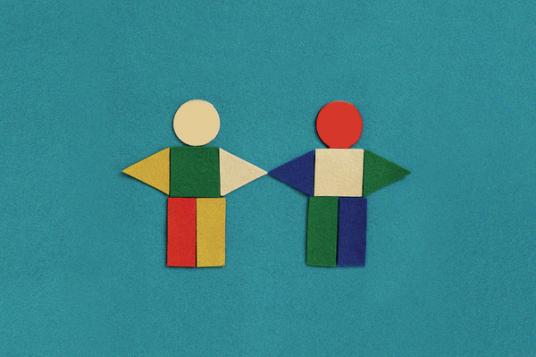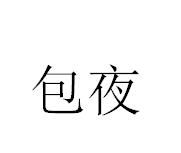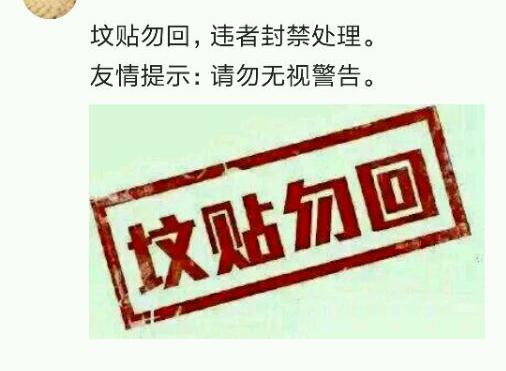过去式(英语时态)

过去式
英语时态
过去式是用来表达动词的“过了”、“完了”,“结束了”等意思,和现在的状态没有关系。过去式,总的来说是英语语法的一种,表示过去某个时间里发生的动作或状态。一般过去式的动词通常用动词的过去式形式来表示,而动词的过去式是在动词原形的基础上变化的。动词的过去式可分为规则动词和不规则动词。
| 名称 | 过去式 |
| 拼音 | guoqushi |
| 释义 | 表示过去某个时间里发生的动作或状态 |
标志词
1、yesterday,昨天,昨日
2、long ago,不久前
3、the day before yesterday,前天
4、long long ago,很久之前
5、once upon a time,曾经,很久之前
6、last day,昨天
7、that day,那天
8、in the past days,过去的日子
9、just then,刚刚
10、once,曾经
常用时间状语
yesterday;a moment ago(刚才);yesterday morning;last week;last night;the day before yesterday(前天);just now(刚才);in+过去的时间
定义
⒈过去发生的而现在已经结束的动作需要用一般过去式来表示
⒉表示过去某个时间里发生的动作或状态。
⒊过去习惯性、经常性的动作、行为;过去主语所具备的能力和性格。
过去时态
表示行为、动作和状态在各种时间条件下的动词形式。
过去时态结构
是指过去时态下的动词形式的语法构成。
过去式就是动词的变化,表示过去发生的事。一般看到ago,before,in几几年,yesterday,last night,就是过去式。
如:work-worked
listen-listened一般的就是直接加ed,特殊的有一些变化。
结构
过去
时态结构基本形式
1,主语+动词过去式+其他;
2,be动词用was/were,
如:Where were you yesterday?
行为动词用:主语+动词过去式,如:I got up late yesterday.
否定句:主语+didn't+动词原一般疑问句;Did+主语+动词原形
3,构成:
⑴be→was—(am,is的过去式)were—(are的过去式)
⑵V.→V-ed(动词过去式)
构成
表示一般过去式的动词通常用动词的过去式形式来表示,而动词的过去式是在动词原形的基础上变化的。动词的过去式可分为规则动词和不规则动词。规则动词的过去式变化如下:
⑴一般情况下,动词词尾加ed,如:
work—worked; play—played;want— wanted; act—acted
⑵以不发音的 e 结尾动词,动词词尾加 d,如:
live—lived; move—moved; decide—decided; decline—declined; hope—hoped;
⑶以辅音字母 + y结尾的动词,把y变为i 再加ed,如:
studied tried copied justified cried carried embodied emptied
⑷以一个辅音字母结尾的重读闭音节动词,双写词尾辅音字母,再加ed,如:
stoppedbeggedfretted dragged dropped planned dotted dripped
⑸以ic结尾的动词,要把ic变成ick再加ed,如picnic→picnicked,traffic→trafficked
⑹注:不规则动词的过去式变化规律性不强,须多加记忆。
go-went,make-made,get-got,buy-bought,come-came,fly-flew,is/am-was,are-were,see-saw,bring-brought,do-did,teach-taught,think-thought,say-said,sit-sat.read-read,spend-spent,eat-ate,give-gave,tell-told,write-wrote,feel-felt,find-found,hear-heard,know-knew,
put-put,grow-grew,take-took,catch-caught,come-came,become-became,swim-swam,sweep—swept,sing—sang,draw—drew,
以上的⑴至⑸条中的发音均有改变,具体分别有/d//t//id/。
而不规则动词的过去式的发音则略有不同,但是有些还是按照一定规律变化的。如以上的:make-made,get-got,buy-bought,come-came,fly-flew,bring-brought,teach-taught,think-thought,say-said,sit-sat.read-read,spend-spent,give-gave,tell-told,write-wrote,feel-felt,find-found,hear-heard,know-knew,put-put,grow-grew,take-took,catch-caught,become-became,swim-swam,sweep—swept,sing—sang,draw—drew。
仔细看一看,能发现它们的一些变化规律,也就是说不需要死记硬背这些过去式,知道了原型和变化规律,就可以写出来了。有的变化部分读音也是有规律的。分类记忆是对学习过去式很有帮助的!
用法
⑴表示过去某一时刻或某一段时间内所发生的动作或情况,通常一般过去式带有表示动作时间状语的词,词组或从句,如 yesterday,the day before last,last week,two days ago 等,上下文清楚时可以不带时间状语。I worked in that factory last year. 去年我在那一家工厂工作。I went to the Tian Long Mountain yesterday.昨天我们去了天龙山。
一般过去时的用法一.概念:一般过去时是表示在过去的时间里发生的动作或状态,通常与表示过去的时间状语连用。
二.时间状语:yesterday,the day before yesterday,two days ago,long long ago,a minute ago,last year(week,month),just now,at that time,in those days.
三.过去时的用法:1.有确定的过去时间状语时要用过去式。
例:We had a good time last week.
2.表示过去连续发生的动作时,要用过去式。
例:The boy closed the door,turned off the window,and then went to bed.
⒊表示过去一段时间内经常或反复的动作,要用过去式。
例:She often came to help me at that time.
四.一般过去式的构成形式:☆Be动词的过去式:⑴肯定句:主语+be动词的过去式(was,were)
例:He was ill yesterday. She was nine two years ago.They were my students long long ago.
⑵否定句:主语+ be动词的过去式(was,were)+ not
例:He was not ill yesterday.She was not nine two years ago.They were not my students long long ago.
⑶一般疑问句:直接把be动词提到句首。
例:Was he ill yesterday?
肯定回答:Yes,he was.
否定回答:No,he wasn't.Was she nine two years ago? Yes,she was. / No,she wasn't.Were they your students long long ago? Yes,they were. / No,they weren't.
☆实意动词的过去式:⑴肯定句:主语+动词的过去式
例:He played football last week.She watched TV last night.
⑵否定句:主语+did not+动词原形
例:He did not play football last week.She didn’t watch TV last night.
⑶一般疑问句:Did+主语+动词原形例:Did he play football last week?
回答:Yes,he did./ No,he didn't.
Did she watch TV last night?
回答:Yes,she did. / No,she didn’t.
五.动词变过去式的几种常用规则:1.一般动词直接+ed;
例:look--looked want--wanted listen --listened
2.以e结尾的词直接+d;例:live--lived phone--phoned
3.以辅音字母加y结尾,变y为i加ed;例:try--tried study--studied
4.重读闭音节结尾的,词尾只有一个辅音字母,双写词尾辅音字母+ ed;例:stop--stopped plan--planned
⒌不规则动词:动词由原形转变为过去式时不按词尾加“-ed”之变化规则者叫做不规则动词。
小学常见的动词不规则过去式如:是be/is/am/are- was,是are- were,来come-came,去go- went,有have- had,做/干do- did,做make- made 读read- read,放put- put,切割cut- cut,写write- wrote,带走take- took,买buy- bought,带来bring- brought,想think- thought,看见see- saw,说say- said,说话speak- spoke,打破break- broke,得到get- got,跑run- ran,告诉tell- told,唱sing- sang,喝drink- drank,吃eat- ate,游泳swim- swam,开始begin- began,偷steal- stole,遇见meet- met,卖sell- sold,坐sit- sat,跑run-ran,读read-read,想要want-want,知道know-known,fall-fell等等。
表示过去某一时刻或某一段时间内所发生的动作或情况,通常一般过去式带有表示动作时间状语的词,词组或从句,如 yesterday,the day before last,last week,two days ago 等,上下文清楚时可以不带时间状语。
I worked in that factory last year. 去年我在那一家工厂工作。I went to the Tian Long Mountain yesterday. 昨天我们去了天龙山。I stayed at home,yesterday.昨天,我整日呆在家里.
一般过去时态:表示过去某一时间所发生的动作或存在的状态。谓语动词要用一般过去式。
时间标志:yesterday(昨天),last weekend(上周),last month(上个月),last year(去年),two months ago(两个月前),the day before yesterday(前天),in 1990 (在1990年),in those days (在那些日子里)等表示过去的时间状语。
如:
I was born in 1990. (我出生在1990年)。
When did you go to the park? (你是什么时候去的公园)。
I went to the park last weekend. (我是上周去的公园)
在上面的句子中第一句属于be动词的一般过去时态;
第二句和第三句属于实义动词go的一般过去时态。
Be 动词一般过去时态
在没有实义动词的句子中使用be动词, am is 的过去式为was; are的过去式为were.
构成:
肯定句
:主语+was (were) +表语
如:I was late yesterday. (昨天我迟到了。)
否定句:
主语+was (were) +not+表语
如:We weren't late yesterday. (我们昨天没迟到)
疑问句
:Was (Were) +主语+表语
如:Was you sick yesterday? (你昨天病了吗?)
肯定回答
:Yes,I was. (是的,我病了。)
否定回答:No,I wasn't. (不,我没病。)
特殊疑问句:
特殊疑问词+was (were) +主语+表语
如:When were you born? 你是什么时候出生的?
awake-awoke-awoken
参考资料
1.一般过去时的标志词·高三网





